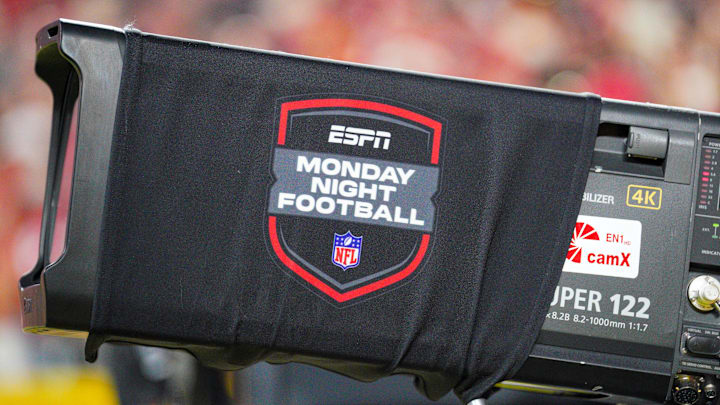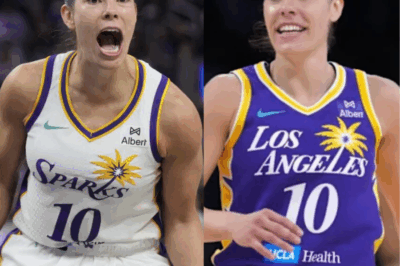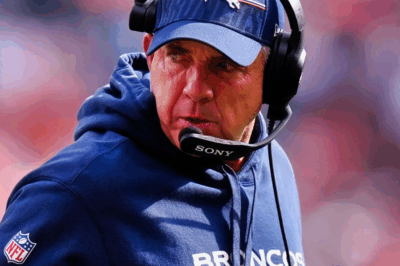A new report reveals the jaw-dropping amount Disney and ESPN are losing EVERY SINGLE DAY without YouTube TV. The number is in the millions… and it’s costing them a fortune.
In the rapidly evolving landscape of digital streaming and traditional television, conflicts between major media giants and streaming platforms have become increasingly common.
Recently, one of the most significant disputes has emerged between Disney — the entertainment conglomerate behind some of the world’s most popular franchises — and YouTube TV, Google’s prominent streaming service.
This ongoing feud has not only captured the attention of industry insiders and viewers but also has profound financial implications, with reports indicating that Disney and ESPN are hemorrhaging millions of dollars every single day as a result.
The Background of the Dispute
To understand the gravity of the situation, it’s essential to delve into the origins of the conflict.
Disney, which owns ESPN, ABC, Marvel, and Lucasfilm, among other assets, has long been a dominant force in both traditional and digital media.
Over recent years, Disney has made significant investments in its streaming platform, Disney+, aiming to compete with Netflix, Amazon Prime, and other streaming giants.
However, as Disney’s streaming ambitions grew, so did its disputes with third-party providers and cable networks.
The core of the current controversy lies in Disney’s negotiations with YouTube TV, a popular streaming service owned by Google that offers live TV channels, including ESPN, ABC, and other Disney-owned networks.
YouTube TV has historically been a key distribution channel for live sports and entertainment content, providing millions of subscribers access to ESPN and other Disney channels.
However, recent negotiations have hit a snag, with Disney demanding higher carriage fees and more favorable terms, while YouTube TV has pushed back, citing rising costs and changing consumer viewing habits.
The Financial Impact: How Much Are Disney and ESPN Losing?
According to industry insiders and recent financial reports, the ongoing dispute has led to a significant loss of revenue for Disney and ESPN.
While exact figures are often kept confidential, estimates from market analysts suggest that Disney is losing upwards of several million dollars every day due to the blackout of ESPN and other Disney channels on YouTube TV.
This loss is driven by multiple factors:
Decline in Subscriber Revenue: With ESPN and Disney channels unavailable on YouTube TV, a substantial portion of viewers have canceled their subscriptions or switched to alternative providers, resulting in lost subscription fees.
Advertising Revenue Shortfalls: Live sports and popular entertainment programming generate billions annually through advertising. The absence of these channels on YouTube TV means advertisers are missing out on valuable impressions, leading to decreased ad revenue.
Brand and Content Value Erosion: Disney’s content remains highly valuable, but its visibility and reach are diminished during the blackout period, impacting overall brand strength and future licensing opportunities.
Industry analysts estimate that Disney’s daily revenue loss attributable directly to this dispute could be as high as $10 million or more, factoring in subscription cancellations, ad revenue shortfalls, and the broader impact on brand equity.
The Broader Industry Context
This dispute is emblematic of a larger trend within the media and entertainment industry, where traditional broadcasters and streaming services are grappling with the challenges of digital distribution rights, carriage fees, and changing consumer preferences.
The rise of cord-cutting — where viewers cancel traditional cable subscriptions in favor of streaming platforms — has forced companies like Disney to rethink their distribution strategies.
Simultaneously, streaming services like YouTube TV are seeking to maximize their content offerings while controlling costs, leading to high-stakes negotiations.
In this context, the Disney-YouTube TV dispute exemplifies the tension between content owners seeking to monetize their programming effectively and streaming platforms aiming to provide affordable, comprehensive packages to consumers.
The Impact on Consumers and Viewers

While the financial implications for Disney and ESPN are staggering, the most immediate and visible impact is on consumers.
Millions of sports fans, entertainment enthusiasts, and casual viewers who rely on YouTube TV for live broadcasts are now unable to access ESPN and other Disney channels.
This blackout has led to frustration among viewers, many of whom have voiced their displeasure on social media and through customer service channels.
Some have resorted to subscribing to alternative services, such as Hulu + Live TV, Sling TV, or DirecTV Stream, often at additional costs.
For sports fans, particularly those who follow major leagues like the NFL, NBA, or college sports, the loss of ESPN’s coverage during crucial games has been particularly painful.
The disruption not only affects viewership but also impacts the revenue streams tied to live sports broadcasting rights.
The Stakeholders and Their Perspectives
Disney’s Position: Disney maintains that its content is valuable and that fair compensation is necessary for the continued production of high-quality programming.
The company argues that the demands for increased carriage fees are justified by the rising costs of content creation and the importance of maintaining quality standards.
YouTube TV’s Response: On the other hand, YouTube TV contends that the current terms are unsustainable given the changing landscape of media consumption.
The platform claims it is seeking a balanced agreement that preserves affordability for consumers while ensuring fair compensation for content owners.
Consumers and Advertisers: For viewers, the dispute is a source of inconvenience and disappointment
. For advertisers, the blackout represents a missed opportunity to reach engaged audiences, leading to potential losses in ad revenue and brand exposure.
The Road Ahead: Possible Resolutions and Industry Implications
As of now, negotiations remain ongoing, with both parties expressing a desire to reach an agreement.
Industry experts believe that a resolution is likely but may take weeks or even months to finalize, given the complexity of the issues involved.
The outcome of this dispute could have far-reaching implications for the future of streaming and traditional broadcasting.
A settlement favoring Disney could set a precedent for higher carriage fees across the industry, potentially leading to increased costs for streaming services and, ultimately, consumers.
Conversely, a compromise that favors YouTube TV might force Disney to reconsider its pricing models and distribution strategies, possibly accelerating the shift toward direct-to-consumer streaming platforms.
A Cautionary Tale for the Streaming Era
The ongoing feud between Disney, ESPN, and YouTube TV underscores the delicate balance that must be maintained in the digital age of media.
As content creators and distributors navigate this complex landscape, the stakes are high — not only in terms of revenue but also in shaping the future of how audiences access entertainment.
For now, Disney and ESPN are experiencing significant financial losses each day the blackout persists, highlighting the importance of strategic negotiations and adaptable business models in the streaming era.
Viewers, advertisers, and industry insiders alike will be watching closely to see how this dispute unfolds, knowing that its resolution could influence the broader trajectory of digital media distribution for years to come.
News
One Fan Uncovers Unexpected Side of Kelsey Plum: Social Media Reacts to Cringe-Worthy Behavior Toward Fan Requesting Autograph
One Fan Uncovers Unexpected Side of Kelsey Plum: Social Media Reacts to Cringe-Worthy Behavior Toward Fan Requesting Autograph In recent…
Arizona Cardinals Quarterback Kyler Murray Officially Out: A Shocking Turn of Events Shakes NFL Fans and Team Dynamics
Arizona Cardinals Quarterback Kyler Murray Officially Out: A Shocking Turn of Events Shakes NFL Fans and Team Dynamics In a…
Denver Broncos Nearing a Major NFL Trade: Could a Pro Bowl Wide Receiver Be Heading to Denver?
Shocking Report: Denver Broncos Nearing a Major NFL Trade: Could a Pro Bowl Wide Receiver Be Heading to Denver? In…
Inside the Reveal: The SI Model Uncovers the Divorce of an NFL Star and His Wife
Inside the Reveal: The SI Model Uncovers the Divorce of an NFL Star and His Wife In the world of…
He was told he WOULDN’T pitch in Game 7. His own trainer LIED. The shocking trick that led to a World Series title.
He was told he WOULDN’T pitch in Game 7. His own trainer LIED. The shocking trick that led to a…
BREAKING: Chicago pulls off a heist for a former first-round phenom. Is this the missing piece for Caleb Williams?
BREAKING: Chicago pulls off a heist for a former first-round phenom. Is this the missing piece for Caleb Williams? In…
End of content
No more pages to load













